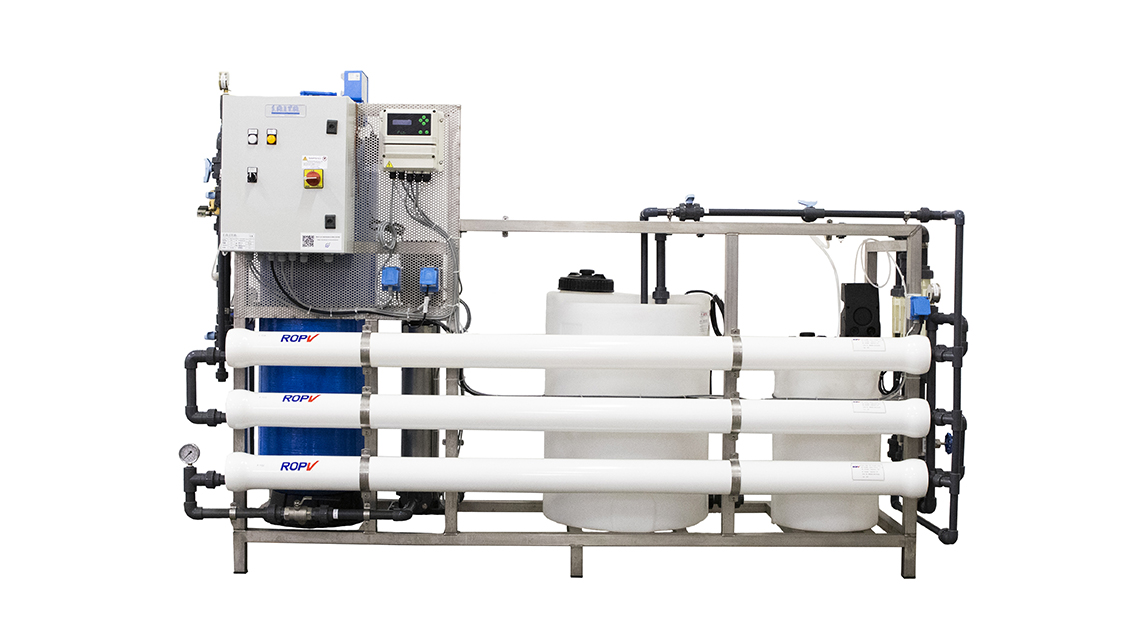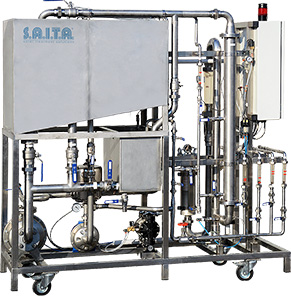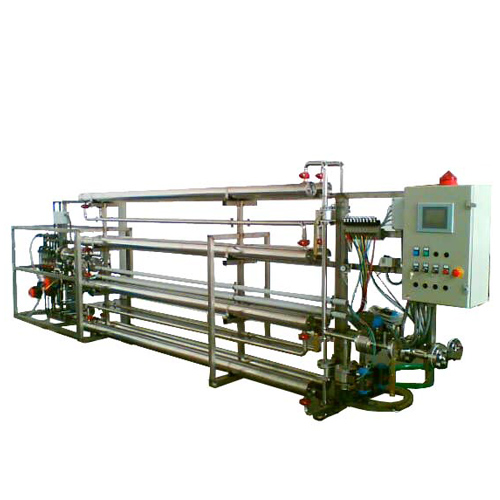Impianti trattamentoACQUE REFLUE
Home
/
membrane-filtration


The process of membrane filtration or membrane cross-flow filtration consists of separating two flows, permuted water and concentrate (containing suspended particles or concentrated salts).
The plants using the principle of membrane filtration are various, according to the filtration degree: microfiltration, ultrafiltration, nanofiltration and reverse osmosis. The choice of installing one or more types of membranes depends on the quality of the fluid to filter, the chemical composition of the incoming liquid and the quality you wish to obtain.
The membranes are installed in a vessel requiring an inlet for the flow to be filtered, an outlet for the filtered water and another one for the concentrate. Supply to the membrane filtration modules takes place via a centrifugal pump providing sufficient pressure to overcome the pressure losses of the filtration modules or osmotic pressure.
As to the microfiltration and ultrafiltration modules, process pressure is generally included between 1.5 and 3 bar, for nanofiltration between 3 and 10 bar while for reverse osmosis, from 10 up to 60 bar in the most extreme cases.
Micro-filtration is applied to remove suspended solid particles in well or pre-treated waste water (e.g. in chemical-physical plants). It is most used as pre-filtration of reverse osmosis modules or as filtration of process baths. Wire-wound cartridges, melt-blown cartridges, ceramic membranes or capillary membranes can be used as filtration modules.
MICRO-FILTRATION ADVANTAGES:
• Elimination of suspended solids
• Low energy consumption
• Downstream filtration protection (e.g. reverse osmosis)
Ultra-filtration systems use ceramic-type membranes to filter and recycle process solutions such as: chemical pickling, degreasing, emulsions or ultrasound washing solutions, removing pollutants like: oils, suspended solids, cleaning pastes, colloids, pigments, etc. Ceramic membranes (alumina or silicon carbide) suit these applications because they work with a very wide range of pH from 0 to 14 and very high temperatures. On the other hand capillary ultra-filtration modules are applied to filter well water and remove suspended solids, colloids, viruses and bacteria. Both types of ultra-filtration membranes can be washed with chemicals to restore their production capacity.
ULTRA-FILTRATION ADVANTAGES:
• Filtration and recycling of degreasing solutions
• Removal of suspended solids from aqueous solutions
• Removal of oil emulsions
• Removal of bacteria
• High resistance to acids and strong bases (working pH from 0 to 14)
• High mechanical resistance and duration of ceramic filters exceeding 5 years

Nanofiltration membranes allow removing organic molecules and polyvalent ions. Nanofiltration systems are used to stabilise well and mains water removing organic molecules, hardness and dissolved solid substances. Other applications are downstream from waste water pre-treated with chemical-physical systems or evaporators. Nanofiltration membranes can also be used to filter aqueous solutions with the purpose of recovering process fluids by separating any waste substances.
NANOFILTRATION ADVANTAGES:
• Hardness removal
• Removal of organic molecules and decolouration
• Removal of sugars and alcohols
• Stabilisation of well or mains water
• High recovery

Reverse osmosis allows separating salts and soluble organic molecules from water. The reverse osmosis desalination process uses the principle of water flow reversal from a more concentrated solution to a less concentrated one by applying pressure to the concentrated solution. The systems include: pre-filtration, dosing of an anti-scaling product, filtration with one- or two-stage osmosis modules and a membrane chemical washing group. Reverse osmosis systems are normally used: for the production of demineralized water, desalination of brackish waters and treatment of waste waters in order to recycle the purified water in a zero discharge circuit.
REVERSE OSMOSIS ADVANTAGES:
• Production of desalinated osmotic water
• High quantity of water produced
• High salt rejection
• High recovery
• Low running costs